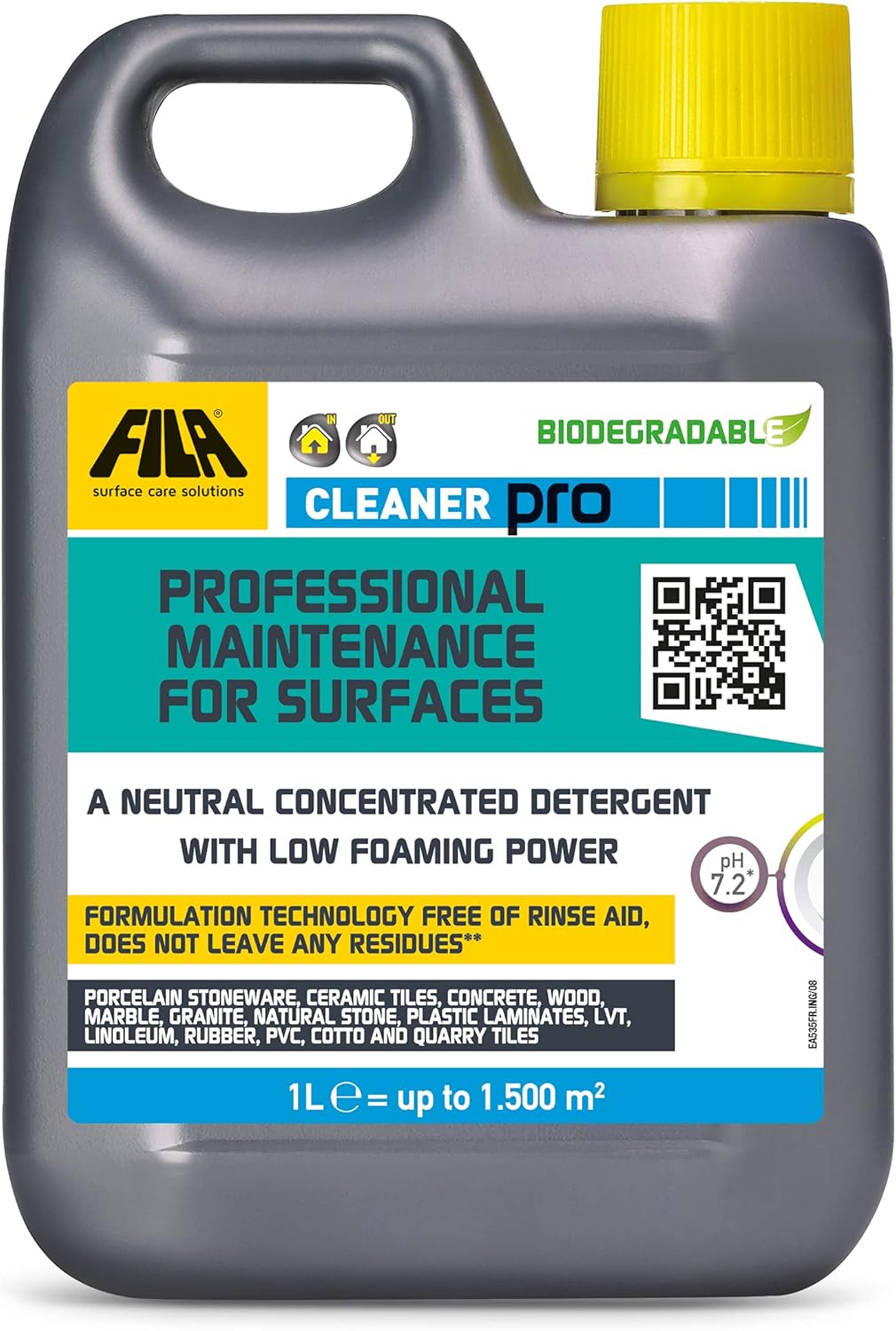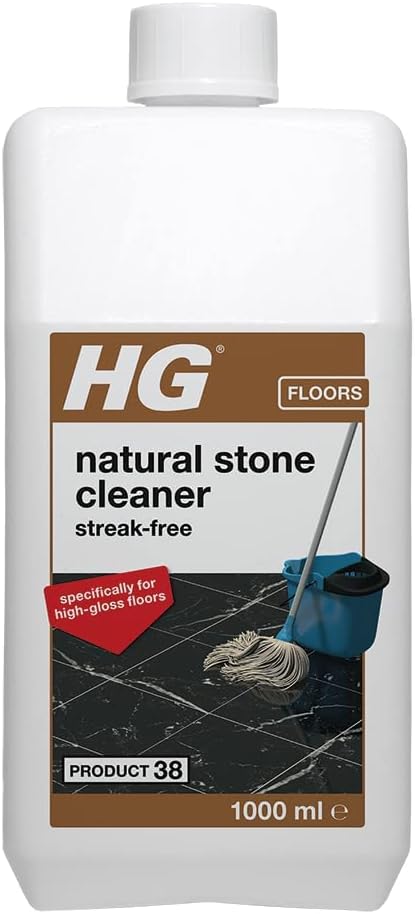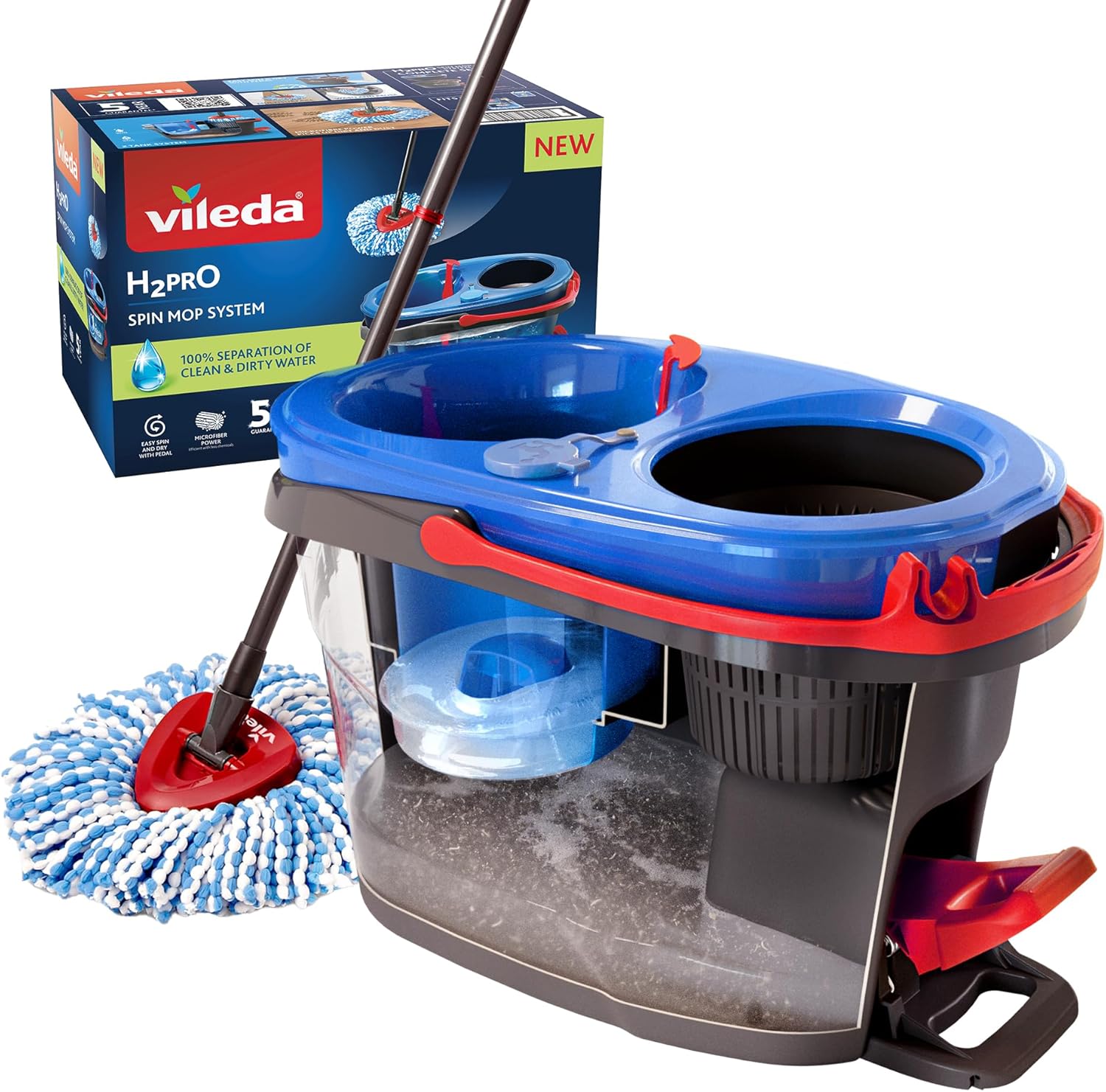
Last Updated on August 28, 2025 by David
This comprehensive guide is designed specifically for homeowners in East Renfrewshire, empowering them to make well-informed choices when selecting a specialist for marble restoration. It highlights the inherent risks associated with DIY methods and the limitations of hiring general cleaning services, particularly when dealing with delicate surfaces like marble. The key points covered include:
- Recognise the Critical Importance of Specialist Care for Marble: Due to its porous structure and vulnerability to acidic or abrasive substances.
- Learn to Avoid Common Pitfalls in Marble Restoration: Mistakes such as improper grinding, polishing, or sealing techniques that could lead to irreversible damage on the stone.
- Discover the Benefits of Engaging a Specialist: This includes customised restoration strategies, access to professional-grade equipment, and long-lasting preservation techniques.
- Essential Qualities to Seek in a Restoration Company: Such as expertise, transparency, a solid reputation in the community, and effective communication regarding methods and expected results.
Master the Fundamentals of Effective Marble Restoration

Marble surfaces are synonymous with elegance and sophistication, significantly enhancing the aesthetic charm of residential, commercial, and public spaces. However, maintaining their flawless appearance can prove increasingly challenging over time due to inevitable wear and tear. This prompts an important inquiry: Do I really need a specialist company for marble restoration? Understanding the intricacies of the marble restoration process underscores the importance of professional support for homeowners wishing to preserve their investments.
Pro Tip: Recommended Products for Daily Care and Maintenance of Marble Surfaces.

Fila Pro Floor Cleaner
|

HG Natural Stone Cleaner 38
|

Vileda H2PrO Spin Mop System
|
What Does the Comprehensive Marble Restoration Process Involve?
The comprehensive marble restoration process entails a series of meticulous steps, including cleaning, repairing, honing, and polishing marble surfaces to revive their original allure and lustre. Over time, even with diligent care, marble can lose its vibrant appearance due to scratches, etching, and stains. Restoration employs various expert techniques aimed at effectively eliminating these imperfections while simultaneously safeguarding the marble against future damage.
Specialist companies leverage advanced tools and methods, including diamond grinding and polishing pads, which prove significantly more effective than any household cleaning solutions available on the market. During the restoration process, trained professionals conduct a thorough assessment of the marble surface to determine the appropriate level of treatment; they tailor their approach based on the specific needs and condition of the marble. This bespoke methodology results in a finish that not only looks stunning but also extends the lifespan of the marble, ultimately preserving its value over the long term.
In the UK, where marble is a popular choice for flooring and countertops, understanding this intricate process can help homeowners make informed decisions regarding home renovations or restorations. Gaining this knowledge empowers homeowners to make choices that will enhance both the aesthetic appeal and durability of their marble surfaces.
Why is Engaging Professional Restoration Services Essential?
Engaging professional restoration services is crucial for maintaining both the structural integrity and visual appeal of marble surfaces. Many homeowners may feel tempted to undertake the restoration independently; however, this approach can inadvertently lead to damage, such as etching or uneven polishing. Professional restoration ensures that the correct techniques are employed, thereby protecting the marble’s finish and enhancing its longevity.
A significant advantage of employing a specialist lies in their profound understanding of various types of marble and the unique characteristics associated with each type. For instance, the restoration techniques suitable for Carrara marble may differ significantly from those appropriate for Calacatta. Professionals can accurately assess the marble’s condition, applying the correct techniques and products that are both effective and safe for the surface.
Moreover, employing professional restoration services adds considerable value to your property. A well-restored marble surface not only enhances the overall aesthetic appeal but could also become a pivotal selling point if you decide to list your property in the future. By investing in expert services, you are not merely restoring a surface; you are preserving a valuable asset that contributes to your home’s worth.
How Do DIY Approaches Compare with Professional Services?
While DIY methods may appear financially appealing, they often fall short in delivering the desired results. Homeowners might resort to harsh chemicals or inappropriate tools that can unintentionally inflict further damage on marble surfaces. For example, using acidic cleaners can lead to etching, a common issue that detracts from the marble’s beauty and integrity.
In contrast, professional services come equipped with the necessary tools and expertise to effectively manage various types of damage. They understand which cleaning agents and techniques are most suitable for restoring marble without causing harm. Furthermore, specialists are trained to identify underlying issues that may not be immediately visible, ensuring a comprehensive restoration process that addresses all potential problems.
Ultimately, investing in professional services can prove to be more cost-effective over time. The expenses associated with repeated DIY attempts, combined with the potential need for more extensive repairs, can far exceed the initial investment in expert restoration. Thus, when contemplating whether to engage a specialist, it is essential to carefully weigh the risks and benefits associated with both options.
Identifying the Right Time for Expert Marble Restoration

Recognising when your marble surfaces require professional attention is vital for maintaining their aesthetic allure. Neglecting minor issues can lead to severe damage that may incur significant repair expenses. So, how can you determine if your marble needs restoration?
What Are the Common Signs of Damage to Watch For?
Marble surfaces may exhibit various indicators of damage over the years. Common signs include etching, which manifests as dull, discoloured patches on the surface; stains, which can penetrate the marble if not addressed promptly; and cracks that jeopardise the material’s structural integrity. Additionally, a noticeable lack of shine and dullness often signals that your marble requires professional intervention to restore its former glory.
Etching is typically caused by exposure to acidic substances, such as fruit juices or certain cleaning agents. This form of damage can be subtle yet noticeable, particularly when light reflects off the surface. Conversely, stains tend to be more evident and can arise from spills or ingrained dirt. If these stains are left untreated, they can become permanent, necessitating comprehensive restoration efforts to rectify the situation.
Conducting regular inspections of your marble surfaces for these indicators can facilitate the early detection of potential problems. If you observe a combination of these issues, it may be time to consult a specialist who can evaluate the damage and recommend appropriate restoration services tailored to your needs.
When Should You Seek Professional Assistance for Restoration?
Determining the right moment to seek professional assistance is essential for preserving the integrity of your marble surfaces. If you encounter significant damage or extensive staining, it is highly advisable to seek expert help. Attempting to resolve these issues without professional guidance can result in further complications, including irreversible damage to the marble.
Moreover, if you find yourself uncertain about the best approach to restore your marble, consulting a specialist is prudent. They can provide a detailed assessment and outline the necessary steps for effective restoration. This is particularly relevant in cases where damage may not be immediately visible, such as subsurface cracks that could worsen over time.
In some instances, homeowners may attempt DIY restoration methods only to realise they are out of their depth. If you have tried various cleaning solutions or techniques without success, do not hesitate to reach out to a professional. They possess the expertise necessary to navigate the complexities of marble restoration effectively and efficiently.
What Preventative Measures Can You Implement for Marble Care?
Implementing preventative measures can significantly reduce the need for extensive restoration work in the future. Regular cleaning is crucial; using pH-neutral cleaners specifically designed for marble helps maintain its shine without incurring damage. Avoiding harsh chemicals and abrasive materials during cleaning will also prevent unnecessary wear and tear on the surface.
Another effective preventive measure is the application of a high-quality sealant every few years, creating a protective barrier to repel stains and moisture, ultimately providing long-lasting protection. This not only enhances the marble’s appearance but also prolongs its lifespan. A well-sealed surface is less likely to absorb spills, making it easier to keep clean and maintain.
Establishing a routine maintenance schedule that includes regular inspections and professional cleaning services can also help identify potential issues before they escalate. By taking these proactive steps, you can keep your marble looking pristine for years to come, significantly reducing the need for more intensive restoration efforts in the future.
How to Choose the Ideal Specialist Company for Marble Restoration in the UK
Selecting the right specialist company for marble restoration in the UK necessitates careful assessment of several crucial factors. The quality of service, reputation, and expertise offered by the company can significantly impact the outcome of your restoration project and the satisfaction derived from it.
How to Evaluate the Qualifications and Certifications of Restoration Companies
When searching for a marble restoration company, it is vital to scrutinise their qualifications and certifications. Look for companies that have received training from reputable institutions and possess certifications that demonstrate their expertise in marble care. This not only assures quality service but also reflects a commitment to adhering to industry standards.
In the UK, several professional associations focus on stone care and restoration. Membership in these organisations often requires compliance with specific guidelines and best practices, further validating the company’s credibility. For instance, firms affiliated with the Stone Federation Great Britain are recognised for their dedication to excellence in stone care and restoration practices.
Additionally, inquire about any specialised training that technicians have undergone. This knowledge can significantly enhance the restoration process, ensuring that the techniques employed are appropriate for the specific type of marble being treated, ultimately leading to superior results.
Assessing Experience and Reviewing Portfolios of Restoration Work
Experience is a critical factor when selecting a marble restoration company. Firms with extensive industry experience are typically better equipped to manage various types of damage and possess a wealth of knowledge regarding different marble types and finishes. They can navigate the complexities of restoration with greater ease.
Reviewing a company’s portfolio can provide insight into its capabilities and the quality of its work. A diverse portfolio showcasing a variety of completed projects illustrates versatility and expertise. Look for before-and-after images that highlight the transformations achieved through their services, as these can provide a tangible sense of what to expect.
Furthermore, consider reaching out to the company for references from previous clients. Hearing about the experiences of others can yield valuable information regarding the quality of service and customer satisfaction. A reputable company should readily provide references upon request, demonstrating confidence in their work.
Why Examining Customer Reviews and Testimonials is Crucial
Customer reviews and testimonials are invaluable resources when selecting a marble restoration company. Online platforms, such as Trustpilot or Google Reviews, can provide insights into the experiences of past clients. Positive reviews frequently highlight aspects such as professionalism, quality of work, and customer service, which are essential for ensuring satisfaction.
When reading reviews, focus on specific details regarding the restoration process and the results achieved. Look for comments that mention the technicians’ expertise and the effectiveness of their techniques. Negative reviews can also be informative, helping you avoid companies that may not meet your expectations and standards.
In addition to online feedback, consider seeking personal recommendations from friends, family, or professionals in the interior design or real estate sectors. Personal referrals often carry more weight and can connect you with trustworthy restoration specialists who are known for their quality work.
Understanding Cost and Evaluating Value for Money in Restoration Services
Gaining a clear understanding of the costs associated with marble restoration services is essential for effective budgeting. However, it is crucial to evaluate cost not only in terms of price but also in relation to the value provided. Different companies may have varied pricing structures, influenced by factors such as the size of the area, the extent of damage, and the specific techniques used.
When comparing costs, ensure that you consider the services included in each quote. A lower price may indicate a lack of thoroughness or the use of inferior materials, which could compromise the restoration quality. Conversely, a slightly higher cost may reflect a comprehensive service that encompasses assessment, cleaning, polishing, and sealing, providing better long-term outcomes.
Obtaining multiple quotes from different companies can be beneficial. This practice allows you to compare not just prices but also the specific services offered. Look for companies that provide a detailed breakdown of their pricing, which can assist in evaluating overall value for money and the expected results.
Ultimately, investing in marble restoration should be viewed as an investment in your property. The long-term benefits of professional restoration, including enhanced aesthetics and increased property value, can far outweigh the initial costs involved, making it a wise decision for homeowners.
Understanding the Costs Associated with Marble Restoration in the UK
Comprehending the costs associated with marble restoration in the UK can empower homeowners to make informed decisions regarding their budget and restoration needs. Several factors can influence the pricing of restoration services, making it crucial to evaluate these elements thoroughly.
What Key Factors Contribute to Restoration Costs?
Multiple factors contribute to the overall cost of marble restoration. Firstly, the size of the area being restored plays a significant role; larger spaces require more time and materials, thus increasing the overall cost. Additionally, the extent of damage can significantly affect pricing—severe damage requiring extensive repairs will naturally incur higher costs than minor cleaning and polishing.
The type of marble also impacts the cost. Certain varieties are more challenging to restore due to their unique properties, necessitating more specialised techniques or materials. For instance, softer marbles may be more difficult to polish without risking additional scratching, leading to increased costs and requiring expert handling.
The specific services required for restoration will also affect the overall price. Comprehensive services, which include detailed cleaning, grinding, polishing, and sealing, will typically be more expensive than basic cleaning. It’s essential to discuss your specific requirements with potential restoration specialists to obtain an accurate quote tailored to your particular situation.
How to Effectively Budget for Restoration
Budgeting for marble restoration requires careful planning and consideration. Begin by assessing the condition of your marble and identifying the areas that need attention. Once you have a clear understanding of the necessary services, request quotes from multiple restoration companies to obtain an accurate estimate based on your needs.
It’s wise to set aside a contingency fund for unexpected expenses that may arise during the restoration process. Sometimes, underlying issues may be uncovered, necessitating additional work. Allocating a budget that accommodates these possibilities can help avert financial strain and ensure a smooth restoration experience.
Consider breaking down your budget based on different aspects of restoration. For instance, allocate funds for cleaning, repairs, polishing, and sealing. By categorising expenses, you can monitor spending more effectively and ensure that all necessary facets of restoration are covered adequately.
Balancing Cost with Potential Value of Restoration
When contemplating the cost of marble restoration, it is essential to balance the expense against the potential value gained. A well-restored marble surface not only enhances your property’s visual appeal but can also significantly increase its market value. Properties with high-quality finishes tend to attract more buyers and can command higher selling prices, providing a strong return on investment.
In addition to boosting property value, professional restoration can extend the lifespan of your marble surfaces, reducing the need for frequent replacements or repairs. This long-term cost-saving aspect should not be overlooked when evaluating the initial investment in professional services, as it contributes to the overall value of your home.
Ultimately, the decision to invest in marble restoration should be regarded as a strategic choice. By prioritising quality restoration, you are ensuring that your marble surfaces remain stunning and functional for many years to come, making it a prudent financial decision in the long run.
Exploring the Step-by-step Marble Restoration Process
Gaining insight into the marble restoration process can clarify what to expect when engaging a specialist company. Each step is pivotal in ensuring that the marble is beautifully restored and safeguarded for years to come, contributing to both aesthetics and functionality.
What Happens During the Initial Assessment of Marble Condition?
The marble restoration process begins with an initial assessment performed by a trained specialist. This assessment is critical, as it enables the technician to evaluate the condition of the marble and identify specific areas requiring attention. They will look for signs of damage, such as scratches, stains, and etching, as well as any structural issues, including cracks that may compromise the marble’s integrity.
During this phase, the technician may also take note of the marble’s finish and the type of marble involved. Understanding these details is essential for determining the most effective restoration techniques to employ. An accurate diagnosis can significantly impact the success of the restoration, ensuring that appropriate methods and products are utilised for the best results.
The initial assessment is often accompanied by a discussion with the homeowner regarding their expectations and any concerns they may have. This dialogue is critical for aligning the restoration process with the homeowner’s vision, ensuring satisfaction with the final outcome and fostering trust in the specialist’s capabilities.
How Thorough Cleaning and Repair Procedures Are Conducted
Upon completion of the assessment, the next step involves cleaning and repairing the marble surfaces. Thorough cleaning is essential to eliminate dirt, grime, and any residues from previous cleaning products. This process often incorporates the use of specialised cleaning agents that are safe for marble, thereby preserving the integrity of the surface while enhancing its appearance.
Following the cleaning process, any necessary repairs will be addressed. This may involve filling in cracks or chips using materials that match the colour and texture of the marble. Proper repair work is vital; if cracks are neglected, they can worsen over time and lead to further damage, ultimately compromising the marble’s aesthetics and functionality.
In some cases, technicians may also employ honing techniques to correct surface irregularities and imperfections. This process contributes significantly to the overall aesthetics and prepares the surface for polishing, ensuring a smooth and refined finish that enhances the marble’s natural beauty.
What is Involved in Polishing and Sealing for Long-lasting Protection?
Once the marble has been cleaned and repaired, the polishing phase commences. This step is crucial for reinstating the marble’s original shine and beauty. Technicians utilise a series of progressively finer polishing pads to achieve a high-gloss finish that enhances the marble’s colour and intricate patterns, showcasing its unique characteristics.
Polishing not only enhances aesthetics but also provides a level of protection for the surface. Following the polishing process, a high-quality sealant is typically applied. Sealing the marble creates a barrier against stains and moisture, simplifying the maintenance of the surface over time. This step can significantly extend the lifespan of the marble, minimising the likelihood of damage and maintaining its pristine condition.
Choosing the appropriate sealant is pivotal; various options are available, ranging from penetrating sealers to topical sealers. The decision often depends on the type of marble and the level of protection required. A professional technician will recommend the most suitable option based on their assessment, ensuring optimal results.
How Grouting and Filling Gaps in Marble Tiles is Accomplished
In instances where marble surfaces are installed in tiles, grouting and filling become essential components of the restoration process. Grout is utilised to fill the spaces between tiles, creating a seamless appearance while also preventing moisture from penetrating beneath the surface, which could lead to further complications.
Technicians apply grout meticulously, ensuring it matches the colour and texture of the marble. Proper grouting not only enhances aesthetic appeal but also contributes to the durability of the marble installation. A well-grouted surface helps to avoid issues such as mould and mildew, which can result from moisture retention and inadequate sealing.
Furthermore, filling gaps with appropriate materials is crucial for creating a smooth surface. Filling compounds should be selected based on the specific type of marble and the nature of the damage being addressed. This attention to detail ensures that the final restoration appears cohesive and flawless, enhancing the overall look of the marble installation.
What to Expect During the Final Inspection and Maintenance Guidance?
Once the restoration process is complete, a final inspection is conducted to ensure that the work meets established quality standards. Technicians will assess the overall appearance and functionality of the marble surfaces, confirming that all aspects of the restoration have been executed accurately and to the highest standards.
Following the inspection, specialists often provide homeowners with maintenance advice designed to ensure the longevity of the restored marble. This may include recommendations on cleaning products, sealing schedules, and best practices for daily care. Proper maintenance is critical for preserving the efforts made during restoration and ensuring that the marble continues to look stunning.
By adhering to the maintenance guidelines provided, homeowners can maximise the lifespan and aesthetic appeal of their marble surfaces. This proactive approach not only enhances the visual charm of the space but also safeguards the investment made in professional restoration, ensuring continued satisfaction.
What Strategies Can You Implement to Maintain Restored Marble Surfaces?
After investing in professional marble restoration, maintaining the newly restored surfaces is paramount to ensuring their longevity and visual appeal. Proper care can prevent further damage and help keep marble looking exquisite for years to come.
What Daily Care Practices Should You Implement for Marble Surfaces?
Daily care for marble surfaces involves implementing simple yet effective practices that contribute to their upkeep. Utilising pH-neutral cleaners formulated specifically for marble is essential, as these products help sustain the surface without incurring damage. Avoid abrasive scrubbers or harsh chemicals, as these can scratch or dull the finish over time.
For routine cleaning, use a soft cloth or mop to promptly wipe away dust and spills. This practice prevents harmful substances from settling into the marble, thereby reducing the risk of staining. If spills occur, they should be blotted immediately rather than wiped, as wiping can inadvertently spread the stain further and worsen the situation.
In addition to daily cleaning, routine inspections of the marble can help detect potential issues early. Look for signs of wear or damage, such as dull spots or new stains, and address these promptly to avoid costly repairs in the future. Early intervention can save time and money while preserving the beauty of your marble surfaces.
How to Establish a Regular Maintenance Schedule for Marble Care?
Implementing a regular maintenance schedule is vital for prolonging the life of your marble surfaces. This schedule should encompass periodic professional cleaning and sealing, which refreshes the marble’s appearance and protects it from stains and damage.
Sealing should generally be performed every 1-3 years, depending on the frequency of use and the specific type of marble. A professional can assist in determining the appropriate sealing frequency based on the marble’s condition and the specific environment it is in, ensuring optimal protection.
In addition to sealing, consider scheduling professional inspections to evaluate the condition of your marble. These inspections can help identify potential issues that may require attention before they escalate, ensuring the continued beauty and integrity of your surfaces, and providing peace of mind.
How to Recognise When Further Restoration is Necessary?
Monitoring the condition of your marble surfaces will enable you to ascertain when professional restoration may be required again. If you notice signs of new damage, such as staining or dull spots, it’s advisable to consult a specialist. Early detection of these issues can prevent the need for extensive restoration work later on, saving both time and money.
Scheduling further restoration is also important if you plan to alter the layout or usage of the space. For instance, if you are renovating a kitchen or bathroom, increased activity may necessitate a professional touch to rejuvenate the marble’s appearance and ensure it remains in optimal condition.
Regular assessments and timely interventions can help maintain the marble’s beauty and value. By staying proactive, you ensure that your investment in marble continues to yield aesthetic and functional benefits over the years.
What Effective Strategies Can You Use to Deal with Stains and Spills on Marble?
Timely attention to stains and spills is critical for maintaining the appearance of your marble surfaces. If a spill occurs, it is essential to act quickly—blot the area with a soft cloth rather than rubbing, which can spread the stain further and damage the surface.
For persistent stains, it is advisable to use a suitable stain remover specifically designed for marble. Many products are available for different types of stains, such as wine or oil. Always conduct a test on a small, inconspicuous area first to ensure there are no adverse reactions, as this can prevent additional damage.
In addition to commercial stain removers, some homeowners opt to create homemade poultices using ingredients like baking soda and water to draw out the stain. This method can be effective but requires patience and care to avoid damaging the marble. Consistent monitoring and prompt interventions are key to preserving the marble’s pristine condition.
Consistent care and prompt interventions can significantly impact the preservation of your marble surfaces’ beauty, ensuring they remain a stunning focal point in your home or business for years to come.
What Frequently Asked Questions (FAQs) Should You Consider Regarding Marble Restoration?
What Does the Marble Restoration Process Entail?
The marble restoration process involves a series of steps, including cleaning, repairing, polishing, and sealing marble surfaces to restore their original appearance and protect them from future damage. Each step plays a crucial role in achieving optimal results.
How Often Should I Have My Marble Surfaces Restored?
Typically, marble should be professionally restored every 1 to 3 years, depending on usage and wear. Regular maintenance can significantly extend this timeframe and reduce the need for extensive restoration.
Is it Possible to Restore Marble Myself?
While DIY marble restoration is feasible, it often poses risks such as further damage. Professional services ensure that proper techniques and tools are employed for effective and reliable results, minimising the risk of mistakes.
What Indicators Suggest That My Marble Needs Restoration?
Signs that indicate restoration may be necessary include dullness, etching, cracks, and deep stains. If you observe these issues, professional restoration may be warranted to restore the marble’s beauty and functionality.
What is the Cost of Marble Restoration in the UK?
The costs can vary based on factors such as the size of the area, the extent of damage, and the specific services required. On average, restoration can range from £15 to £30 per square metre, depending on these variables.
Is Professional Restoration a Worthwhile Investment?
Yes, professional restoration adds value and enhances the beauty of marble surfaces, making it a worthwhile investment for homeowners seeking to preserve their property and improve its aesthetic appeal.
How Long Does the Marble Restoration Process Take?
The duration of the restoration process depends on the level of damage and the size of the area, but it generally takes between 1-3 days for most projects, ensuring thorough and meticulous work.
Which Cleaning Products Should I Use for Marble?
Utilise pH-neutral cleaners specifically designed for marble to prevent damage to the surface. Avoid any harsh chemicals and acidic products that could cause harm or lead to etching.
How Can I Prevent Future Damage to My Marble Surfaces?
Regular cleaning, sealing every 1-3 years, and promptly addressing spills can significantly mitigate future damage and maintain the marble’s pristine appearance, ensuring long-lasting beauty.
What Steps Should I Take if I Notice a Stain on My Marble?
Act swiftly by blotting the area with a soft cloth and employing a suitable stain remover designed for the specific type of stain. Always test any product on a small area first to avoid any unwanted reactions.
The Article Do I Need a Specialist Company for Marble Restoration in East Renfrewshire first found on https://www.abbeyfloorcare.co.uk
The Article Specialist Company for Marble Restoration in East Renfrewshire? appeared first on https://fabritec.org
The Article Marble Restoration Specialists in East Renfrewshire Was Found On https://limitsofstrategy.com
The Article Marble Restoration Experts Serving East Renfrewshire found first on https://electroquench.com


